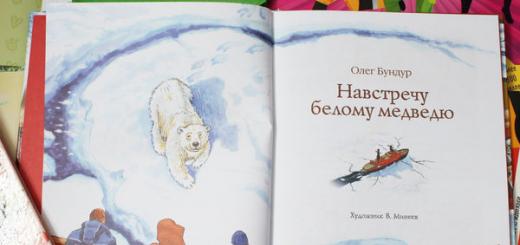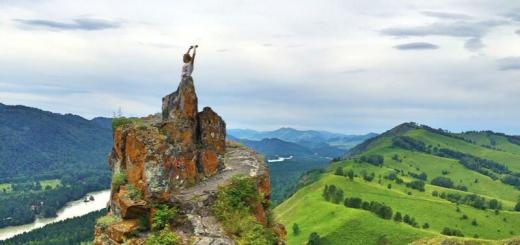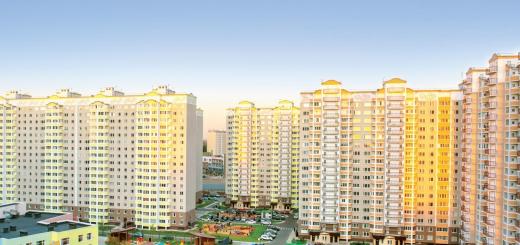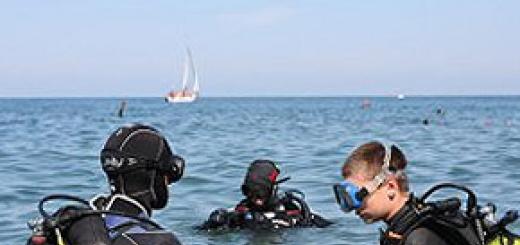An amazing country. It is impossible to gaze without aspiration of its not majestic nature. In winter, it is restrained and harsh, and in the short northern summer it blooms with pure and rich emerald colors. Norwegian fjords can be considered a national treasure of the country. These are picturesque sea bays, cutting into the rocky coast and stretching tens of kilometers inland. Millions of tourists come to see them every year. The best angle is from the water.
During a boat trip, a breathtaking view of the steep slopes, from which waterfalls rush, opens up. At first, the traveler is surrounded by green hills and mountains, but gradually snow-covered peaks appear on the horizon. In a word, an unforgettable sight.
Previous photo 1/ 1 Next photo
Which fjords are worth visiting?
There are thousands of fjords in Norway that dot the entire western part of the Scandinavian Peninsula. But mostly ten of the most famous and most accessible are visited, among which everyone knows the Sognefjord, Hardangerfjord and Lysefjord. Of course, the infrastructure around the bays is excellently developed. It is easy to reach them by transport from the nearest cities; there are comfortable hotels and restaurants in the fishing villages on the shores. If a tourist wants to see all this beauty from the water, then at his service are ferries, pleasure ships and even cruise liners. Observation platforms are equipped on land, where motorways lead.
Previous photo 1/ 1 Next photo

Fjord tours and excursions
Organized fjord tours in Norway in most cases start from Oslo. The programs of the agencies are different, but most often they involve inspecting the bays both from water and from land. The cost of travel for 6-7 days is from 1000 EUR per person (excluding the road to Oslo, plane tickets are paid for independently). This amount also includes breakfast. If you go by ferry from St. Petersburg, it will be cheaper - from 300 EUR per person. But this is a fee only for accommodation in 2-3 local cabins, transfers between cities / towns by buses and basic excursion services.
Previous photo 1/ 1 Next photo

Self visit
Independent travelers will need to use public transport. This almost always involves multiple transfers. For example, to see the Preikestolen rock and get to the Lysefjord, you first need to arrive in Stavanger from Bergen by bus, then take a ferry to Tau, where you change to a bus going to the foot of the mountain. Many people prefer to rent a car - the roads in Norway are incredibly scenic. There are even so-called "national tourist roads" along the shores of the bays, but some of them are paid. For example, the passage of the Lysebotn - Lauvvik (Lysefjord) section of 40 km costs 650 NOK. It is along these highways that observation platforms, equipped recreation areas, and information centers are located.
Popular Norwegian fjords

The nature of the Norwegian fjords is amazing and unique. A wonderful pristine world filled with unexpected discoveries opens up before travelers. Only here it is possible to simultaneously admire the bright green of the valleys, snow-capped mountain peaks, blue sea waters, artistic waterfalls and picturesque rocky shores.
The legendary Norwegian fjords are located on the northwest coast of the country. Millions of years ago, powerful movements of the earth's crust led to the formation of deep cracks in the territory of the Eurasian lithospheric plate in the North Atlantic and the Scandinavian Peninsula. Many faults were below sea level and were soon flooded with water. During the last ice age, the formed long, narrow and deep fjords were additionally processed by the tongues of glaciers sliding towards the sea. Slowly cutting through the continental space, they created that unprecedented natural beauty, which still evokes sincere delight and awe today.
The fjords are not only a symbol, but also the soul of Norway. Each fjord has its own landscape, shade of sea water, microclimate and, as the Norwegians assure, a special character. It is best to start your acquaintance with the fjords of Norway with a visit to the city of Bergen. It is not for nothing that the locals call this place "the gateway to the kingdom of the fjords", and the city itself will charm visitors with its picturesque places, cultural attractions and a special cozy atmosphere so inherent in small European cities. And don't be afraid to get bored! Fords Norway is a great place for fishing, hunting, mountaineering, hiking and other outdoor activities.
Nordfjord is one of the northernmost fjords in Western Norway, stretching from the largest continental glacier in mainland Europe, Jøstedalsbreen, all the way to the Atlantic coast. The fjord is 110 km long and is internally divided into 4 main branches: Gloppefjorden, Faleidfjorden, Hyefjorden and Eidsfjorden.
 Kjenndalsbreen Glacier, Norway. © Natalia Eriksson Photography
Kjenndalsbreen Glacier, Norway. © Natalia Eriksson Photography The Nordfjord region is the perfect blend of scenic landscapes, historical sites and a decent selection of recreational activities. Here you will see how the tongues of the giant glacier Briksdalsbreen and Kjenndalsbreen, descending to the Nordfjord, paint the adjacent lakes and rivers in a piercing turquoise color; how numerous waterfalls rush down from rocky mountains. You will also have the opportunity to visit the deepest lake in Europe - Hornindalsvatnet, and on the island of Selje, near Nordfjord, stroll through the well-preserved ruins of a 12th century monastery built by Benedictine monks.
The nature of the Stryn and Nordfjord region offers outdoor enthusiasts excellent conditions for hiking, rafting, canoeing, fishing, cycling and glacier climbing. Between November and April, the area is covered with good snow, making it possible to enjoy all the delights of winter sports.


© Lasse Fløde Photography
The Hardangerfjord is the second longest fjord in Norway and the third longest in the world. The 113-kilometer fjord is located in the southwestern part of the country and boasts a maximum depth of 891 meters. It originates near the city of Bergen, in the North Sea off the island of Stur and extends to the largest mountain plateau in Norway called Hardangervidda.
The Hardangerfjord is often referred to as the Garden of Norway for its colorful fruit trees, which smell for miles around during flowering. Most travelers try to visit this place in spring in order to fully enjoy the beauty of the blossoming of apple, pear, plum and cherry trees.
 The famous rock Trolltunga (Trolltunga). © Terje Nesthus / Flickr
The famous rock Trolltunga (Trolltunga). © Terje Nesthus / Flickr Norwegians are very proud of the fjord, considering it one of the most significant tourist attractions in their country. The pristine nature, serenity and quietness of the Hardangerfjord attracts hundreds of thousands of tourists every year. Surrounded by high rocky mountains, sometimes reaching one and a half kilometers, and mesmerizing waterfalls, the Hardangerfjord has become a source of inspiration for many artists. For example, the fjord is immortalized on the canvas "Honeymoon in Hardanger" by the Norwegian masters Hans Gude and Adolf Tidemand.
Near the Hardangerfjord there are many attractions, in particular the Vøringsfossen waterfall with a total height of 182 meters, the third largest Norwegian glacier Folgefonn with a length of 60 km and a stunning rock ledge on Skjeggedal mountain - Trollunga rock. The last wonder of nature is a breakaway cliff overlooking Ringedalsvatnet Lake at an altitude of 350 meters. All daredevils who have overcome the petrified tongue of the Troll are guaranteed a fantastic view of the surroundings, a charge of unprecedented vigor and magnificent photographs.
 Vøringsfossen waterfall, Norway. © Kiwibu / Flickr
Vøringsfossen waterfall, Norway. © Kiwibu / Flickr 
In the southern part of the fjord region, near Stavanger and Haugesund, there is a small but infinitely loved Lysefjord. Despite its modest size (the length of the fjord is 42 km, and the depth ranges from 13 to 422 meters) Lysefjord is one of the most popular tourist sites in Norway due to its educational value and spectacular attractiveness.
 Pulpit Rock, Norway. © Alexander Mikulich Photography
Pulpit Rock, Norway. © Alexander Mikulich Photography Here is the famous Preikestolen cliff, also called Pulpit Rock in English or Preacher's Pulpit. The top of a giant rock, hanging at a height of 604 meters above the Lysefjord, is remarkable for its surprisingly smooth surface and almost perfect square shape. It is believed that in ancient times the "Pulpit Rock" served as a place for pagan rituals. Even today, Preikestolen attracts curious tourists eager to get some adrenaline rush. Just remember, the path to the cliff is quite difficult, in some places there are steep paths. Therefore, if you are not confident in your abilities, it is better to fully enjoy the view of the cliff from the side of the fjord by taking a pleasant ride on a boat or ferry.
An equally famous landmark in Norway is the Kjerag rock, which has long been chosen by climbers and base jumpers. Thrill-seekers will surely remember the photo session on the Kjeragbolten rock, which hangs in the crevasse of two sheer cliffs over a 1080-meter-high abyss. The Norwegian pea stone is considered one of the most dangerous stones in the world. And not without reason, because even a small gust of wind is able to throw a curious daredevil who perched on him into a cliff.

© Rob Pelon Photography
 Pea stone Kjeragbolten, Norway. © Maksim Chokan / Google Plus
Pea stone Kjeragbolten, Norway. © Maksim Chokan / Google Plus
The largest fjord in Europe, the Sognefjord is the second largest in the world, second only to the Greenlandic Scorsby. This is the most, the most Norwegian fjord: it is the longest - its length is 204 km, the deepest - the maximum water column reaches 1308 meters, the most popular - in 2005, its part, Nærøyfjord, was included in the list of UNESCO sites. The "King of the Fjords", as the Norwegians themselves like to call him, is located 170 km from the city of Bergen. Penetrating the central part of the country, the Sognefjord is a center of attraction for hundreds of thousands of tourists a year.
Nature is the main attraction of the Sognefjord, able to enchant everyone with its lush valleys, deep gorges, massive mountain ranges, roaring waterfalls, glaciers and quiet lakes full of trout. Here you can see the highest waterfalls in the country, in particular the majestic and highest natural waterfall in Norway, Vettisfossen, with a height of 275 meters, which is near the town of Ordal. And a leisurely walk through the Viking village of Gudvangen, located in a narrow gorge and surrounded by steep rocks and dense forest, will forever leave a tremulous mark on your soul.
 Headquarters (XII century) in the city of Urnes, Norway. © Mihaela Dinca Photography
Headquarters (XII century) in the city of Urnes, Norway. © Mihaela Dinca Photography There are two national parks in the vicinity of Sognefjord - Jostedalsbreen National Park and Jotunheimen National Park. Both parks are ideal for mountaineering, rafting, canoeing and horse riding. Hiking and cycling enthusiasts will remember the so-called Rallarvegen, a route through the most breathtaking landscapes of the Sognefjord with its rich history and well-preserved customs.
Lovers of antiquity and connoisseurs of architecture should definitely visit the small town of Urnes, the highlight of which is Stavirka. This beautiful wooden church was erected in the XII century and is considered the oldest of such holy structures that have survived to this day.
And, of course, a trip to Songnefjord will not be complete without a visit to the unique Flåmsbana railway. One of the steepest and most extreme railways in the world, with its modest length of 20 km, has a vertical drop of 864 meters. Built in the harsh conditions of the Norwegian landscape, the Flåm Railway is a true work of engineering. A fascinating train ride among high-mountainous farms, picturesque waterfalls, rivers, snow-covered peaks awaits you.

© Erik Barfoed / Flickr
 Flåmsbana Railway, Norway. © Bent Inge Ask / Flickr
Flåmsbana Railway, Norway. © Bent Inge Ask / Flickr Geirangerfjorden
Shrouded in legends, adorned with sheer cliffs and gurgling waterfalls, the Geirangerfjord proudly bears the title of the most picturesque Norwegian fjord. Due to its uniqueness and beauty, in 2005 it was listed as a UNESCO World Heritage Site as part of the Western Norway Fjords complex. The Geirangerfjord is 15 km long and has a maximum depth of 600 meters. This fjord is located 100 km from the city of Ålesund, surrounded by the steepest mountains of the entire western coast of the country.
The main charm of the Geirangerfjord lies in the cascades of water that rush from the sheer cliffs and give rise to majestic waterfalls, the most famous of which are the Seven Sisters (De syv søstrene), the Bridegroom (Friaren) and the Bridal Veil (Brudesløret).
 View of the Geirangerfjorden from Fludalsuvet. © Ximonic
View of the Geirangerfjorden from Fludalsuvet. © Ximonic You will be able to admire the artistic fjord from the cruise ship. However, perhaps the most spectacular views before travelers open up from the viewpoint of Ørneveien. The path is not easy, because the so-called "Road of the Eagles", leading to the observation deck, is a difficult section of a mountain serpentine. Having overcome 11 sharp turns and climbed from the coast to the highest point of the mountain - Korsmur, from a height of 620 meters above sea level, you will see the best panorama of the Geirangerfjord.
You can also enjoy the virgin nature, the purest mountain air and unforgettable views of this area from other viewing platforms. Dalsnibba (1500 meters above sea level), the Flydalsjuvet cliff, which has an intriguing name "threshold to heaven" and the Trollstigen mountain road, winding among steep slopes and streaming waterfalls will give tourists an unprecedented delight.
Connoisseurs will surely appreciate a visit to the local museum in Geiranger, which tells the story of the fjords and displays amazing artifacts well preserved from the Ice Age.
True gourmets simply must visit the Herdalssetra alpine farm near the village of Norddal, where in the summer you can not only watch the making of goat's milk cheese and caramel, but also taste these traditional Norwegian delicacies. Herdalssetra is one of the largest surviving Alpine goat farms, whose owners try to maintain the farming traditions of 300 years ago in every possible way.
 The breathtaking mountain serpentine Trollstigen, Norway. © Andrew Cawa Photography
The breathtaking mountain serpentine Trollstigen, Norway. © Andrew Cawa Photography  The evening charm of the Norwegian town of Ålesund. © Europe Trotter Photography
The evening charm of the Norwegian town of Ålesund. © Europe Trotter Photography What are the fjords of Norway
The word fjord can be literally translated as a bay. It is in Norway that their number is the largest. If we take into account only the main fjords without branches, then there are 97 of them. And the most amazing thing is that each fjord has its own unforgettable landscape and its own history. Some of them are several tens of meters long, while others extend for tens of kilometers.
The appearance of fjords in Norway is due to 2 reasons:
- As a result of tectonic movements of the earth's crust, a break in the crust occurs and a fjord appears in its place.
- After the ice age, ice floes began to come down, collecting and dragging huge boulders with them. As a result, the structure of the earth's surface changed and the unique bays of Norway appeared.
To get to know all the fjords, you need to travel around the country for several months, which is quite difficult. Therefore, you can see all the beauty of nature by visiting the most famous of the fjords. In order to find them, you need to hit the road along the roads leading from the cities of Bergen and Alesund.

It is unique for its size. Sognefjord is honorably ranked second in the list of the largest fjords in the world. It is as long as 204 km, and the maximum depth is 1308 meters. The fjord is located near the city of Bergen.
The landscape of the fjord is very rich: these are majestic mountains with snow caps, endless meadows and breathtaking waterfalls. Tourists can visit the Sognefjord either by cruise ship or by walking or cycling.

Compared to the endless Sognefjord, the Geirangerfjord seems quite small. After all, its length is all 20 km. But even despite its small size, it is still considered the most visited fjord by tourists.
Already in 2006, the Geirangerfjord was included in the UNESCO list. Tourists can not only enjoy the scenic spot, but also fish, rafting and kayaking.
There is a real threshold to heaven on this fjord, where the best view opens up. Fjord waterfalls also delight tourists.

And this fjord is considered the narrowest in Norway. The rocks surrounding it seem to embrace the waters of the bay. According to legend, the fjord is named after the god Njord, who fell in love with this bay for its picturesque landscapes. God liked the sea fjord much more than the endless seas and oceans, and he began to protect it.
Nareufjord is located 150 km from Bergen. Once you reach it, you can walk along the royal trail, see a stunning panorama from the Stegastein observation deck and visit the real Viking village - Gudvangen.
The meaning of the word "fjord" in Scandinavia is more general than in the rest of the world - for example, in the eastern part of Norway, the term is used, among other things, for narrow freshwater lakes or even rivers.
However, usually a rocky sea bay of a winding shape, penetrating into the inland for many kilometers, is considered to be a fjord. Most of the fjords are deeper than the adjacent sea level. The height of the rocks, which are the shores of such a bay, reaches several hundred meters, and the length is many times greater than the width. Usually, many branches depart from the main fjord, forming a kind of tree-like structure.
Some regions of Chile, New Zealand, USA, Russia, Canada and other countries can boast of such natural wonders. But the most interesting fjords are located in Scandinavia, and the most picturesque in Norway.
Norwegian fjords
Located in Greenland, Scorsby, which is 350 km long and has rocky shores of almost 1.5 km, is considered the longest in Europe.
The second and third places are rightfully taken by the Norwegian Sogne Ford and Hardangerfjord. The length of the first is 204 km with a maximum width of 6 km and a height of the banks of just over 1.3 km. The dimensions of the second are more modest - the length is 183 km, the width is 10 km, and the height is 750 m.
In total, there are over a thousand fjords in Norway. Some of them are extremely narrow (in some places no more than 250m), for example, the Geirangerfjord or Nerøyfjord, while others, on the contrary, are wide as bays - Boknafjord or Tornheimsfjord. Fjords are often so deep and wide (especially in western Norway) that they can only be crossed by ferry. Historically, these bays have been the only possible main routes, since overland travel in such terrain is difficult, if not simply unrealistic. To this day, the fjords remain a serious obstacle to the construction of railways and highways.
Climate
In winter, the fjords do not usually freeze due to the relatively warm ocean. Summer temperatures also depend on the remoteness of the ocean - on the outer parts they are quite moderate, while on the inside the summer is comparatively long and warm. This climate makes it possible to grow fruits and berries on an industrial scale inside the fjords, in fields sheltered from the winds. Most of the fruit and berry products grow on the slopes of the Hardangerfjord.
The most beautiful fjords
Geirangerfjord and Nørøyfjord, located in southwestern Norway, are 120 km apart and are part of the western Norwegian fjord, which stretches from Stavanger in the south to Ondalsnes 500 km in the northeast. The two fjords listed as the longest and deepest in the world are among the most scenic. Numerous waterfalls, forested shores, lakes and glaciers create an unusually beautiful landscape. In 2005, the Geiranger Fjord and the Nерrøy Fjord were included in the UNESCO World Heritage List.
In addition to the Sogne, Hardanger, Geiranger and Nerøy fjords, the following are popular among tourists:
- Lysefjord, thanks to the picturesque rocks of Preikestolen and Kjerag;
- Oslofjord, on the territory of which there are hundreds of small islands;
- Westfjord, in whose waters killer whales live, and many others.
Coral reefs
At the beginning of the 21st century, coral reefs located at a depth of 40 to 150 m were discovered and partially explored along the bottom of some Norwegian fjords. It is believed that it is because of their presence that the Norwegian coastline is such a good place for fishing. There are many life forms on the reefs: plankton, corals, anemones, fish, several species of sharks and others. Most are specially adapted to life under high water pressure and in complete darkness.
Norway is considered one of the most interesting countries in Europe precisely because of the beauty of its landscapes, which are unusual for the fjords that intricately cut almost the entire coastline.











